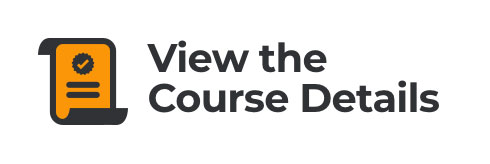This week and every week, my private patients tell me how difficult it is to lower their sodium on the Kidney Stone Diet®. I’ve written blog posts explaining how to do this, but lowering sodium remains a big challenge so let’s review the many ways we can reduce our intake.
While we all need sodium in our diet to help balance fluids in our bodies, too much can increase the risk of kidney stones. Let’s dive into why sodium matters and how to manage your intake to keep your kidneys healthy and happy.
Sodium and Kidney Stones: What’s the Connection?
Kidney stones form when certain substances, like calcium, oxalate, and uric acid, become too concentrated in your urine. High sodium levels release more calcium into the urine, which can combine with oxalate to form stones. The more sodium you consume, the more likely you are to deal with kidney stones (and bone loss). It’s no wonder why so many of my kidney stone patients also have osteopenia or osteoporosis.
Reducing sodium is one of the most effective dietary strategies for kidney stone prevention.
Quick Facts:
- The recommended daily sodium intake is less than 2,300 mg per day (about 1 teaspoon of salt). In the KSD and AHA (American Heart Association), we are hoping for about 1,500 mg/sodium/day.
- Most of us consume more sodium than we think, often through processed and restaurant foods.
- Reducing sodium helps prevent the formation of calcium-based kidney stones.
And now, without further ado…drum roll, please!!!
100 Tips to Reduce Sodium
- Read Nutrition Labels: Look for foods with less than 5% of your daily sodium value per serving.
- Cook at Home: Home-cooked meals are a great way to control how much salt is added.
- Rinse Canned Foods: If you use canned beans or vegetables, give them a good rinse to wash away some sodium.
- Choose Fresh Over Processed: Fresh fruits and vegetables naturally contain little sodium, while processed foods are often high in sodium.
- Flavor with Herbs and Spices: Season your meals with garlic, onion, lemon, or herbs like basil and rosemary instead of reaching for the salt shaker.
- Use Low-Sodium Alternatives: Opt for low-sodium versions of broths, soups, and condiments. Here is my list of recipes for making low-sodium seasonings for snacks and meals. And here are even more recipes to save you some money! Don’t want to make your own? Buy these!
- Limit Sauces and Dressings: Many sauces and dressings, like soy sauce or salad dressing, are high in sodium. Try making your own or using them sparingly.
- Watch Your Bread: Some breads and rolls are surprisingly high in sodium. Turn it around, Buster Brown, check labels and look for lower-sodium options.
- Eat Potassium-Rich Foods: Foods high in potassium (think more fruits and veggies) help counterbalance sodium’s effects on blood pressure.
- Limit Processed Meats: Bacon, ham, sausage, and deli meats are packed with sodium. Swap them for fresh cuts of meat, poultry, or fish.
- Cut Back on Cheese: Cheese can be high in sodium. Use it as a garnish rather than the main feature of your meal. Swiss cheese, along with Farmer’s cheese, is lower-sodium cheese.
- Snack Smart: Choose fresh fruit, unsalted nuts, or homemade popcorn over chips and pretzels. A list of low-sodium snacks can be found here.
- Avoid Instant Foods: Many instant foods, like ramen or boxed mac-and-cheese, are high in sodium. Opt for fresh or frozen meals instead.
- Drink Water: Proper hydration helps flush excess sodium from your body and supports kidney health.
- Be Restaurant-Savvy: Ask for sauces and dressings on the side, and request that your meal be cooked with less or no added salt.
- Limit Frozen Meals: These often contain a lot of sodium for preservation. Look for lower-sodium options or cook meals to freeze yourself.
- Beware of ‘Healthy’ Labels: Foods labeled “low sugar,” “reduced fat,” or “light” often compensate with added sodium, so read labels carefully.
- Season With Vinegar: Use vinegar (such as apple cider or balsamic) to add a punch of flavor without sodium. I love rice wine vinegar on my sushi.
- Plan Ahead: If you know you’ll eat out, reduce sodium earlier to balance your intake. Get right back on track tomorrow!
- Educate Yourself: Knowing where sodium lurks in your food can help you make informed choices. Apps and websites can assist in tracking your sodium intake. Also, my kidney stone prevention course is a must to reduce stone risk.
- Dilute Sauces: If you love sauces like marinara or soy sauce, try diluting them with water or a sodium-free broth.
- Make Your Own Salad Dressings: Store-bought dressings can be loaded with sodium. Make simple dressings with olive oil, vinegar, and herbs.
- Try No-Salt-Added Snacks: Look for no-salt-added snack options like crackers, chips, or nuts. Again, a list for you.
- Choose Plain Grains: Opt for plain rice, pasta, and oats instead of pre-seasoned versions, which are often high in sodium.
- Use Fresh Garlic and Onion: These add much flavor without needing salt. Plus, they’re packed with health benefits!
- Swap Salt for Lemon Juice: A splash of lemon juice can brighten dishes and replace the need for added salt.
- Pick the Right Frozen Veggies: If you’re buying frozen vegetables, go for those without added sauces or seasonings.
- Limit Pickled and Fermented Foods: While delicious, pickles, sauerkraut, and other fermented foods are often high in sodium.
- Select No-Salt-Added Canned Products: Look for “no salt added” options for canned tomatoes, beans, and vegetables.
- Snack on Fresh Veggies: Carrot sticks, cucumber slices, and bell peppers are great low-sodium snacks.
- Go Easy on Condiments: Ketchup, mustard, and relish are sneaky sources of sodium. Use them sparingly.
- Skip the Instant Seasoning Packets: Pre-made seasoning mixes often contain a lot of sodium. Make your own with herbs and spices.
- Choose Unsalted Butter: Use unsalted butter or margarine to reduce hidden sodium in cooking and baking.
- Look for Low Sodium Baking Powders: Some baking products contain sodium, but there are sodium-free alternatives.
- Add salt at the End of cooking: If you must, do it at the end. You’ll often use less, and it’ll still have a strong flavor.
- Make Soups From Scratch: Canned and boxed soups can be very high in sodium. Homemade soups allow you to control the amount of salt.
- Try Avocado: This creamy fruit adds richness to dishes without needing salt. Use it in place of butter or mayo.
- Use Fresh Herbs Generously: Fresh herbs like parsley, cilantro, and dill bring loads of flavor, allowing you to use less salt. All my meal plan recipes use fresh herbs. This service has been life-changing for hundreds of kidney stone formers. Simple, satisfying KSD safe with all the oxalate, salt, calcium, and added sugar calculated for you!
- Experiment with Salt Substitutes: Some salt substitutes can mimic the taste of salt without the sodium. Be mindful if you have kidney disease, as some contain potassium.
- Split Restaurant Portions: Restaurant meals are often high in sodium. Split your meal in half and save the rest for later, or share with a friend.
- Opt for Fresh Deli Cuts: If you love deli meats, ask for freshly roasted turkey or chicken. These are often lower in sodium than processed versions. I always get no-added-sodium turkey from my local deli.
- Marinate Your Own Meat: Instead of buying pre-marinated meat, make your own with fresh herbs, garlic, and olive oil.
- Use a Dash of Hot Sauce: Some low-sodium hot sauces can give a kick of flavor without adding much sodium.
- Make Your Own Pizza: Homemade pizza lets you control the amount of salt in the dough, sauce, and toppings. My website has a low-carb pizza recipe.
- Limit Bouillon Cubes: Bouillon cubes are often high in sodium. Opt for low-sodium broth or make your own stock.
- Choose Sodium-Free Seasonings: Many seasoning blends, such as Cajun or taco seasoning, contain a lot of sodium. Look for sodium-free alternatives. Here is my zero-sodium taco seasoning recipe.
- Steam Vegetables: Steaming veggies bring out their natural flavors without adding salt.
- Roast Vegetables: Roasting brings out the sweetness in vegetables, reducing the need for extra seasoning.
- Snack on Unsalted Rice Cakes: Unsalted rice cakes are a crunchy, low-sodium snack option. Watch the portion made with brown rice, as it is higher in oxalate.
- Limit Cured Fish: Cured fish, such as smoked salmon or anchovies, are high in sodium. Use them sparingly or swap them for fresh fish.
- Make Your Own Bread: Unlike many store-bought loaves, homemade bread allows you to control the sodium content.
- Check the Sodium in Baking Mixes: Pancake, biscuit, and muffin mixes often contain a lot of sodium. If you can, make them from scratch.
- Use Citrus Zest: Lemon, lime, and orange zest add a punch of flavor without any salt.
- Try a Salt-Free Rub: Use paprika, cumin, and garlic powder to create salt-free meat rubsmeat rubs.
- Limit Cottage Cheese: Cottage cheese can be high in sodium. Look for low-sodium varieties or substitute them with Farmer’s cheese or plain Greek yogurt.
- Replace Bread with Lettuce Wraps: To avoid sodium from bread products, use lettuce leaves instead of bread for sandwiches.
- Limit Pre-Seasoned Fish: Fish, like tilapia or salmon, may come pre-seasoned with sodium-heavy marinades. Opt for plain fillets and season them yourself.
- Swap Out Canned Soups: Make larger batches of homemade soups and freeze them for a low-sodium, quick meal. Here is my quick, easy, low-sodium chicken soup for cold and flu season.
- Cut Back on Salad Toppers: Avoid croutons, bacon bits, and processed cheeses in salads, often high in sodium.
- Experiment with Mustard Seed: Ground mustard seed can add tanginess to dishes without needing prepared mustard, which often contains sodium.
- Use Whole Grains: Whole grains like quinoa, farro, and bulgur naturally contain little to no sodium and are healthier than processed grains. Portion, not perfection, applies; you can still eat these grains. Read this.
- Limit Cured Meats: Bacon, salami, and pepperoni are sodium-heavy. Try fresh meats or reduced-sodium versions.
- Eat Whole Fruits: Whole fruits like apples, berries, and oranges are sodium-free and make a healthy snack. Portion, not perfection, applies; you can still eat oranges. Here is your oxalate food list.
- Try Hummus Without Salt: Make your own hummus and control the salt content by adding more lemon, garlic, and tahini. Tahini is higher in oxalate, so watch portion sizes and get your daily calcium needs met.
- Swap Out Salt for Paprika: Paprika adds a smoky, flavorful kick without adding sodium.
- Make Homemade Sauerkraut: Store-bought sauerkraut can be high in sodium, but homemade versions allow you to limit the salt.
- Choose Plain Greek Yogurt: Flavored yogurts often contain added sodium. Stick with plain and sweeten it with fruit or honey.
- Use Coconut Aminos: Coconut aminos are a low-sodium alternative to soy sauce and can be used in similar dishes. This one is great.
- Swap Salt for Ginger: Fresh or ground ginger can add a zesty flavor to many dishes without salt. Ginger can be higher in oxalate, but a little goes a long way! Enjoy.
- Choose Fresh Salsa: Fresh salsa made with tomatoes, onions, cilantro, and lime is a great low-sodium topping for tacos or salads.
- Use Miso Paste Sparingly: While miso can add umami flavor, it’s also high in sodium and oxalate. Use just a small amount to flavor soups and sauces.
- Boil Potatoes with Garlic: Add garlic or bay leaves for flavor instead of salt when boiling potatoes.
- Opt for Salt-Free Peanut Butter: Many peanut butter contains added salt. Choose salt-free versions or make your own.
- Sprinkle Nutritional Yeast: Nutritional yeast has a cheesy, umami flavor that can replace salt in many dishes. I love this one.
- Look for Low-Sodium Pickles: Some brands offer low-sodium pickles, or you can make your own with less salt.
- Use Fresh Herbs in Soups: Fresh parsley, cilantro, and thyme add flavor without adding salt to broths and soups.
- Cook Lentils and Beans from Scratch: Dried beans and lentils, unlike canned versions, have no added sodium. Soak and cook them yourself. Here is alist of oxalate and beans.
- Watch out for Sodium in Sports Drinks: Many sports drinks contain added sodium. Instead, hydrate with water or low-sodium options.
- Choose Potassium-Rich Foods: Potassium can help balance sodium levels. Avocados, bananas, and tomatoes are excellent sources.
- Use Coriander and Cumin: These spices can give food an earthy flavor without adding salt.
- Limit Seltzer and Flavored Waters: Some seltzers contain added sodium. Choose sodium-free versions or infuse water with fruit.
- Cut Down on Meat Portions: Animal proteins naturally contain sodium. Reduce portion sizes and replace some with plant-based proteins.
- Check Frozen Fruits and Veggies: Some frozen fruits and veggies have added sodium sauces. Look for plain varieties.
- Avoid “Brined” Foods: Brined foods, such as olives and pickled vegetables, are usually high in sodium. Rinse them if needed.
- Bake with Low-Sodium Baking Powder: Regular baking powder contains sodium, but low-sodium options are available for baking.
- Limit Crackers and Snack Bars: Many crackers and snack bars contain sodium. Look for low-sodium or no-salt-added options.
- Use Tomato Paste Instead of Tomato Sauce: Tomato paste is concentrated, so you can use less to get flavor without the added sodium found in pre-made sauces.
- Opt for Fresh Meat Over Pre-Seasoned: Many pre-seasoned meats are high in sodium. Buy fresh and season them yourself.
- Eat Plain Popcorn: Air-popped popcorn without butter or salt is a tremendous low-sodium snack.
- Switch to Unsalted Butter: Regular butter can be high in sodium, but unsalted varieties are available.
- Make Your Own Dips: Pre-made dips, like onion or ranch, are sodium-heavy. Make your own with fresh ingredients. I have a ranch seasoning recipe here.
- Reduce Condiment Usage: Ketchup, soy sauce, and barbecue sauce contain sodium. Use smaller amounts or find low-sodium alternatives.
- Make Your Own Flavored Water: Infuse water with cucumber, mint, or berries instead of sodium-flavored bottled water.
- Limit Breaded Foods: Breaded foods, like chicken nuggets and fish sticks, often have extra sodium. Make your own or buy plain options.
- Use Unsalted Stock in Soups: To control the sodium content of soup, choose unsalted stock or broth.
- Reduce Instant Oatmeal: Instant oatmeal packets often have added sodium. Make oatmeal from whole oats instead.
- Rethink Bagged Snack Mixes: Trail and other snack mixes often contain salted nuts and pretzels. Make your own with unsalted nuts and seeds.
- Protein Bars and Shakes: I am working on a low-sodium protein bar ebook as I write. They are filled with sodium, and so are protein shakes. I use a no-sodium vegan protein powder here.
- Smoothies: Depending on the ingredients, they can contain much added sodium. I have an ebook on low-sodium smoothie recipes for kidney stone formers.
- TIP 100: I do not want you to be perfect. Just not oblivious to where sodium is found. You can still enjoy dining out or eating your favorite salty food; get right back on track when you do. No one makes a kidney stone with a meal or two.
Final Thoughts
Lowering your sodium intake prevents kidney stones and benefits overall health, from reducing high blood pressure to improving heart health and weight loss. Take small steps, and you’ll be amazed by how easily you can manage your sodium while enjoying delicious meals.
And remember, I have a low-sodium, Low-sugar snack and dessert cookbook to help you on your way. Low sodium doesn’t mean we can’t eat fun foods! Go here for more info.
Your friend and advocate,
Jill














Leave a Reply